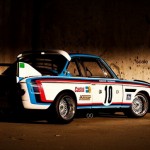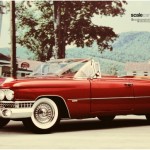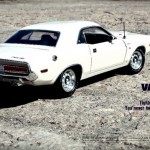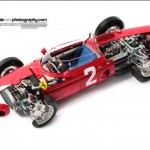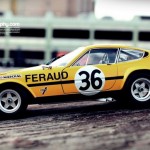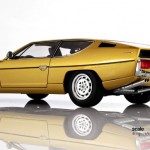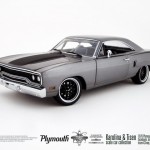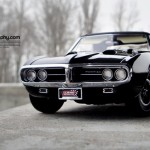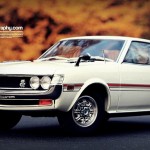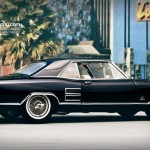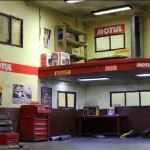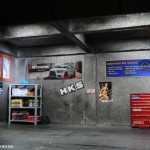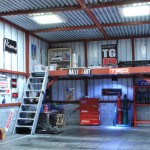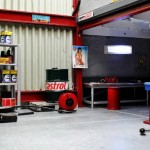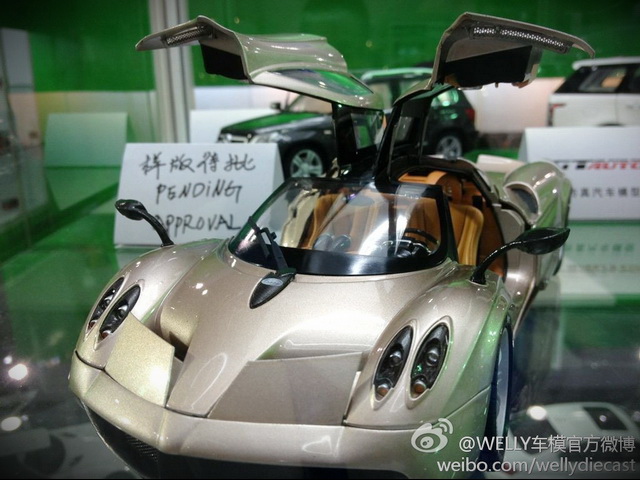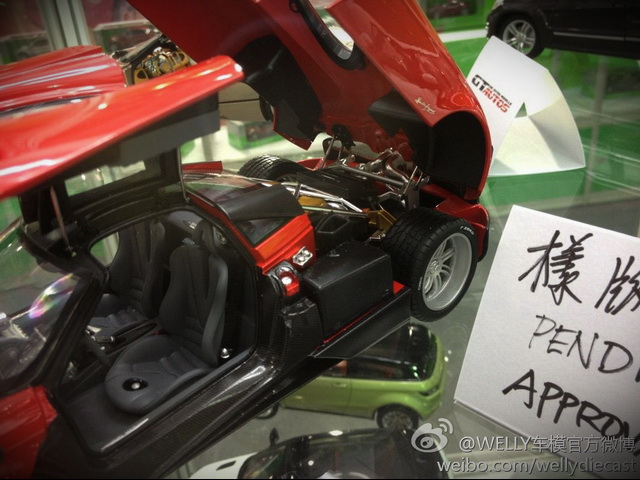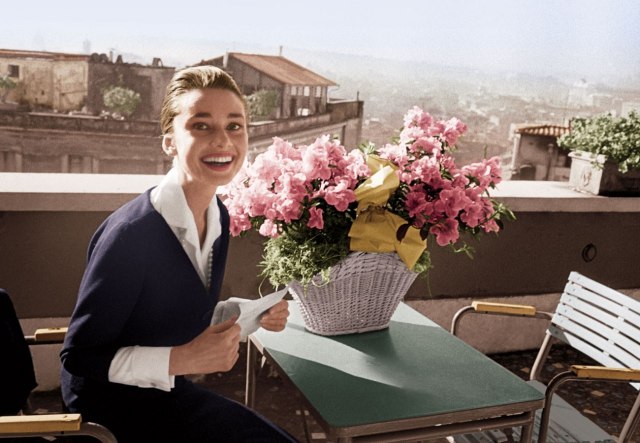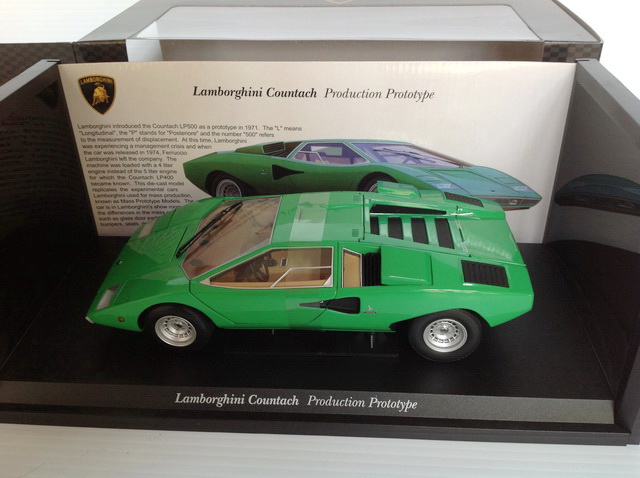Tennis Racket Paint Job (轉文)
Now, we are not talking about players that use the same thing as the off the shelf model available to us and add weight or a different grip shape like Pete Sampras used to.
For essentially his entire career, Sampras used the same ProStaff 6.0 Midsize racquet, although he did have a specific grip shape and size that he wanted, along with having it weighted to be much heavier and much more difficult to play with than the retail model. One important note about his racquet is that Sampras would only play with racquets from the no longer operating St. Vincent factory.
The reason behind this is that Sampras was extremely sensitive to changes, and preferred the St. Vincent made racquets. The quality control at the island factory was extremely high but more importantly, due to the humidity of the area, the molds became warped, resulting in a thicker 18mm beam than the standard 17mm from other factories. Once the St. Vincent factory was shut down and only China made PS 6.0s were available, it wasn’t exactly the same racquet Sampras was playing on TV, but it wasn’t like we see today.
The question though, how similar the gear on the shelf to the ones the pros use? Racquet manufacturers have gotten smarter in that from generation to generation, we are starting to see the same molds being used with updated technologies but essentially the same name.
For example, the Pure Drive that Carlos Moya used back in 2002 has many similarities to the Pure Drive GT of today. So is it ok for a manufacturer to paint Kim Clijsters original Pure Drive to look like the new Pure Drive GT and sell the new model as her racquet?
Babolat, Wilson, and Head have been the most noted three companies customizign the pros’ gear. For example, Andy Roddick still uses the same original Pure Drive + he did when he won the 2003 US Open, but now it is painted to look like Pure Drive + Roddick GT.
Rafael Nadal is still using the original black colored AeroPro Drive and the Cortex band is simply painted onto the racquet to look like the AeroPro Drive GT.
Wilson, of course, claims that Roger Federer switches racquets every two years, most recently to the BLX Six-One Tour. Such small changes are made to the racquets between generations and Wilson is smart enough to implement internal only changes that it is not easily seen.
Other classic examples are Marat Safin who “changed” to the new racquet every generation but actually always used the predecessor.
While those examples are mainly differences in paint and a technology or two, what are the real differences?
When Novak Djokovic signed with Wilson years ago, Djokovic was using the Head Radical / Prestige / Pro Tour mold before, and Wilson developed the nBlade 98 in an attempt to mimic his previous frame. Strangely enough, he never liked it enough to switch to it, and continued using the same mold he had been using. Even when he won his first Australian Open supposedly using the 93″ KBlade Tour, a quick glance shows that both his nBlade 98 and KBlade Tour share the same 18×20 string pattern as his old (and current) Head racquets.
While both Wilson frames also have 18×20 patterns, they have a different drilling pattern and so it’s easily noticed that the positions of some of the strings are different. Even now, Djokovic is listed as using the 100″ YouTek IG Speed MP 18×20, but continues to use the same PT57 mold. Realistically, the closest racquet to what Novak is actually using would be an older Pro Tour 630 frame. Compared to the approximately 11.6oz weight of the YouTek IG Speed, his racquet comes in about an ounce heavier in weight with more weight in the head.
Andy Murray claims that he is using the YouTek Radical Pro, but is he really? Check this out: Two indications jump out on this claim, the string pattern, and the grommets. While the retail Radical Pro comes in a 100″ head with a 16×19 string pattern, Murray’s racquet does have a 16×19 string pattern, but different spacing, resulting in a different overall feel. His racquet actually follows the string pattern of the Prestige Pro, which is a 98″ headsize.
As successful as Murray is, I honestly can’t imagine Head going to the effort of making a racquet with the same string pattern but different spacing, and making a mold and specially producing the CAP grommets that you see along the sides of his racquet when they have a 98″ mold already created. The CAP system has most notably been seen on a majority of the Prestige models, and it’s no secret that Murray has been using the CAP grommets on his Radical frames even back to the days of his i.Radical.
A much more bizarre tactic of sales strategy involved Rafael Nadal up until about a year ago when he made the switch to Babolat RPM Blast. While most will say that he is using the 16g version of the string, he is actually using a thicker version that is 1.35mm in diameter. Up until that point though, Babolat was claiming that Nadal was using Pro Hurricane Tour, but was using the Duralast polyester.
There were actually two reasons for claiming that Rafa was using PHT instead of Duralast. The first of course is that PHT is almost twice the cost and a newer string that they were trying to sell. The second was because the Duralast string that Nadal was provided was yellow in color compared to the natural color available at retailers.
These are just a few examples of these marketing techniques, and plenty of other players customize as well. Lleyton Hewitt, for example, used the SRD Tour 90 for a long time with various different paintjobs. The most extreme instance that comes to mind was the short lived contract between Marat Safin and Dunlop. At the time, Dunlop released the Muscle Weave 200G 90, which was never released in the US, to make it appear that Safin had switched. It turns out that Safin never made the switch from his Head racquet though, and after having the Dunlop logo stencil put on the string, Head actually filed a lawsuit against Dunlop.



